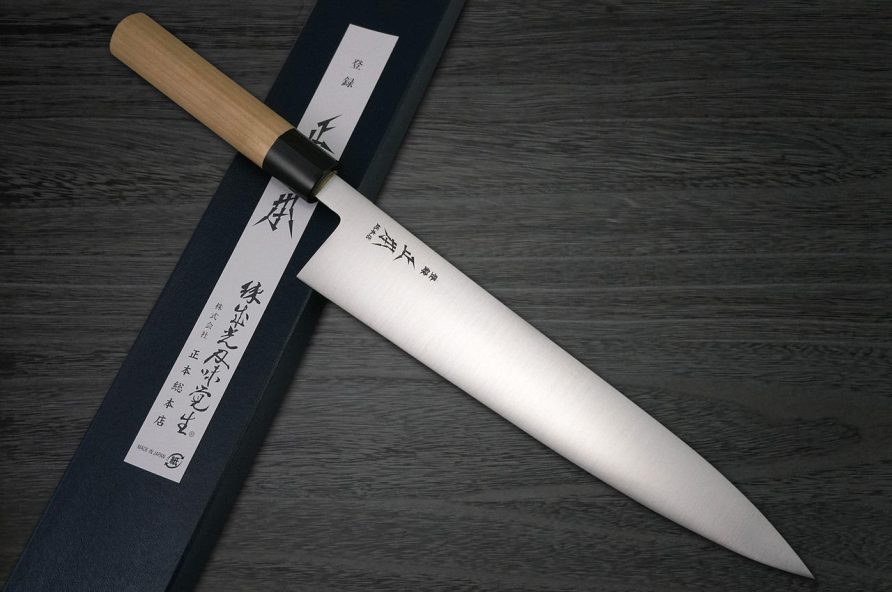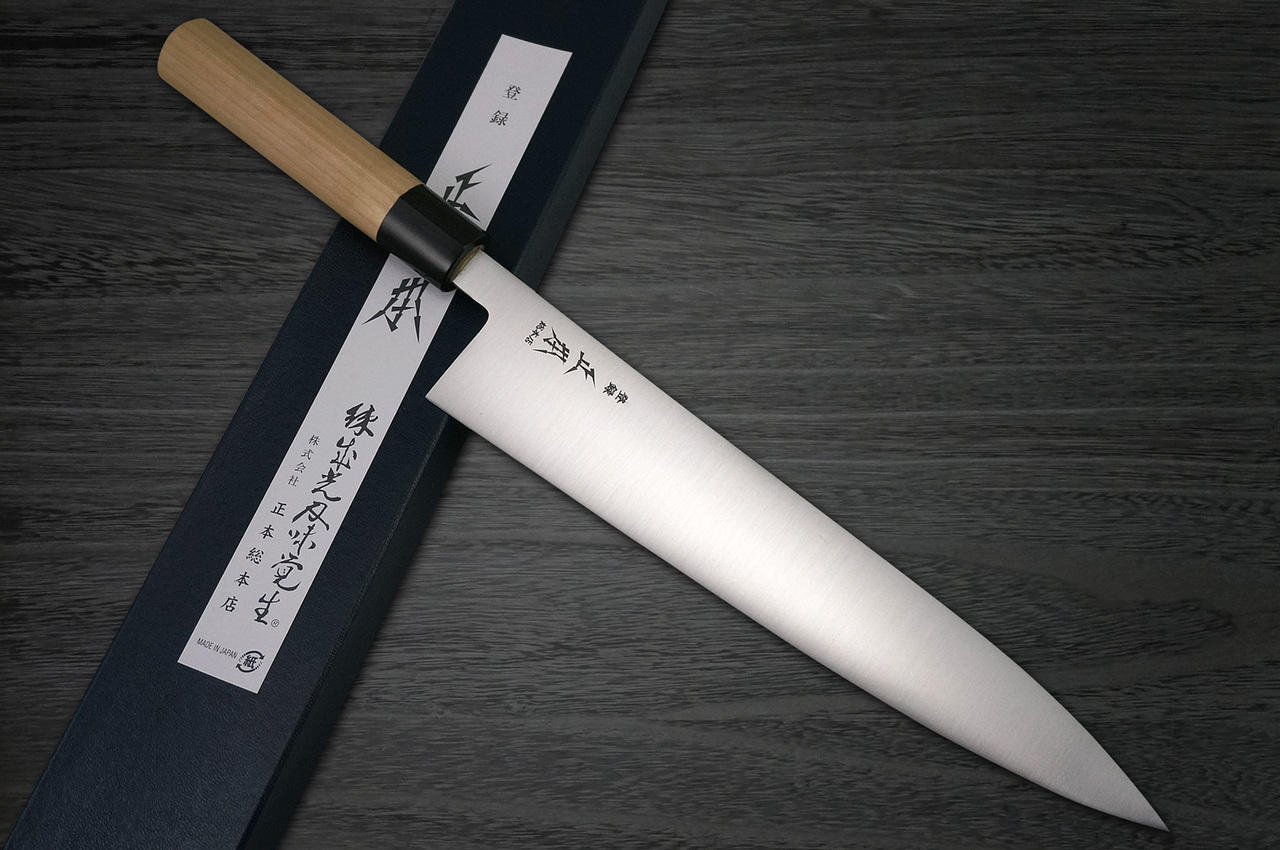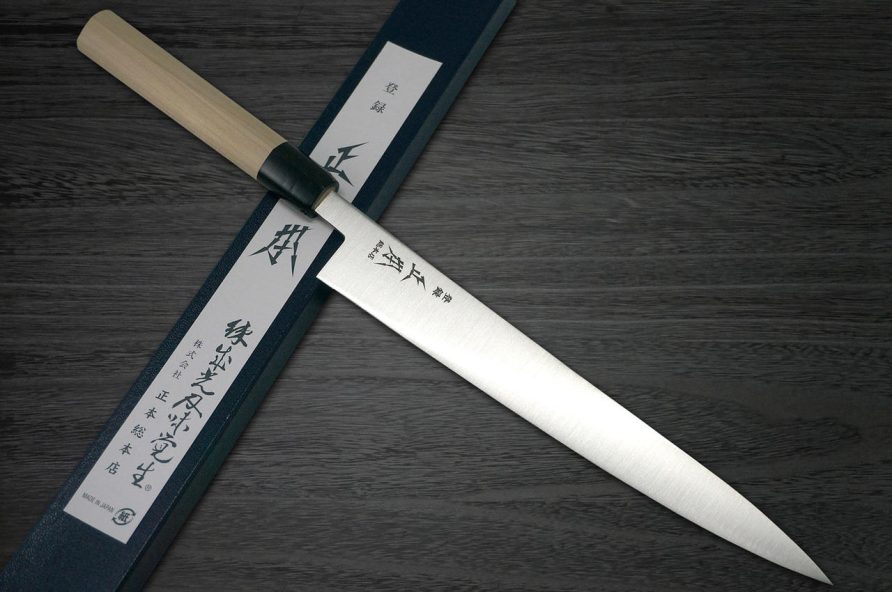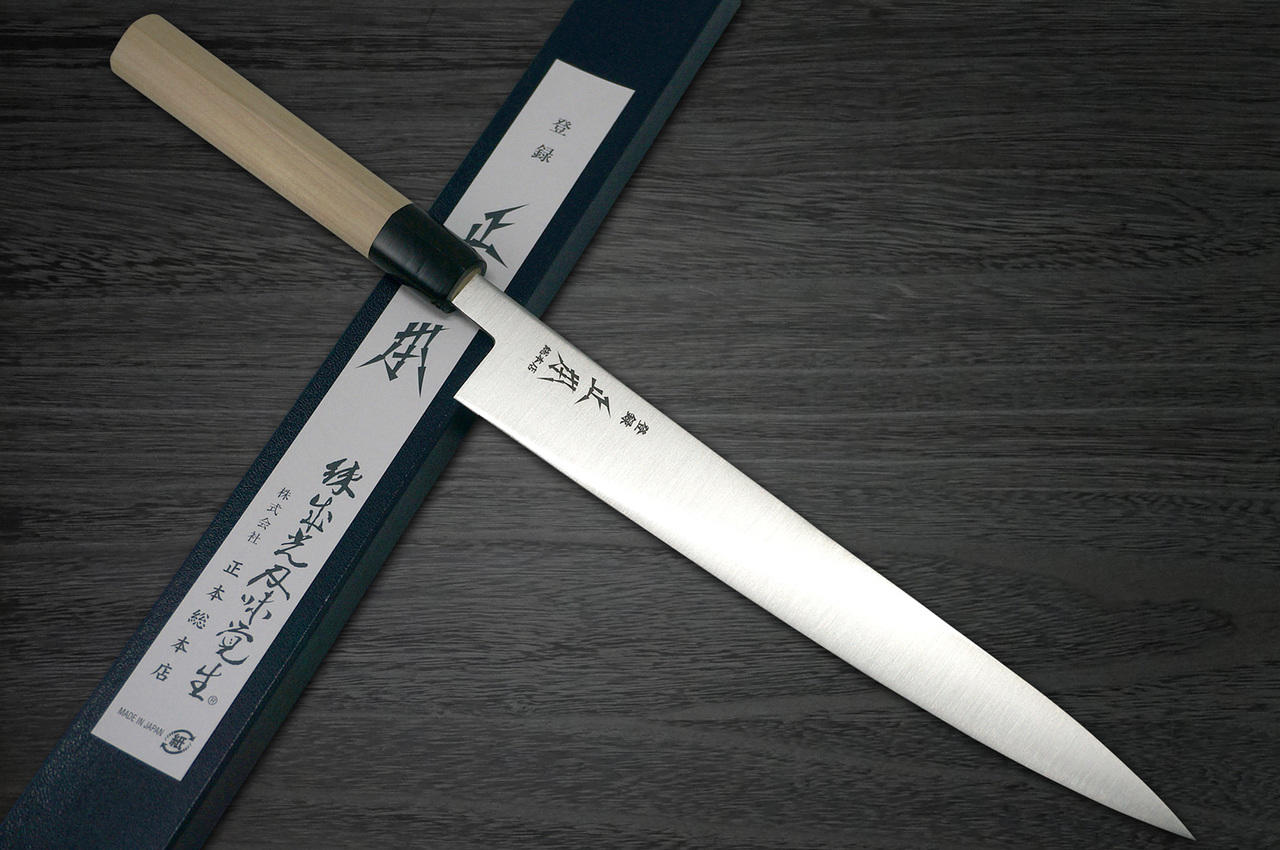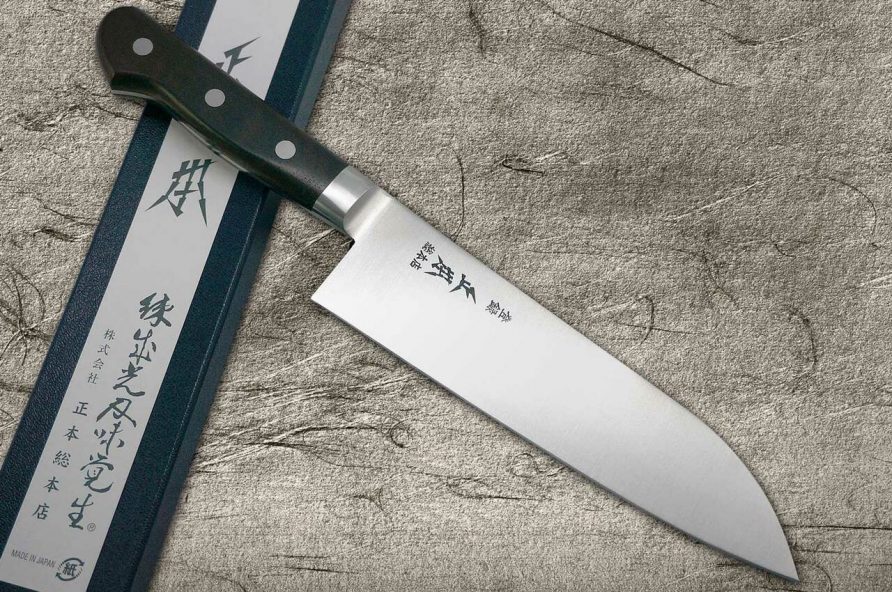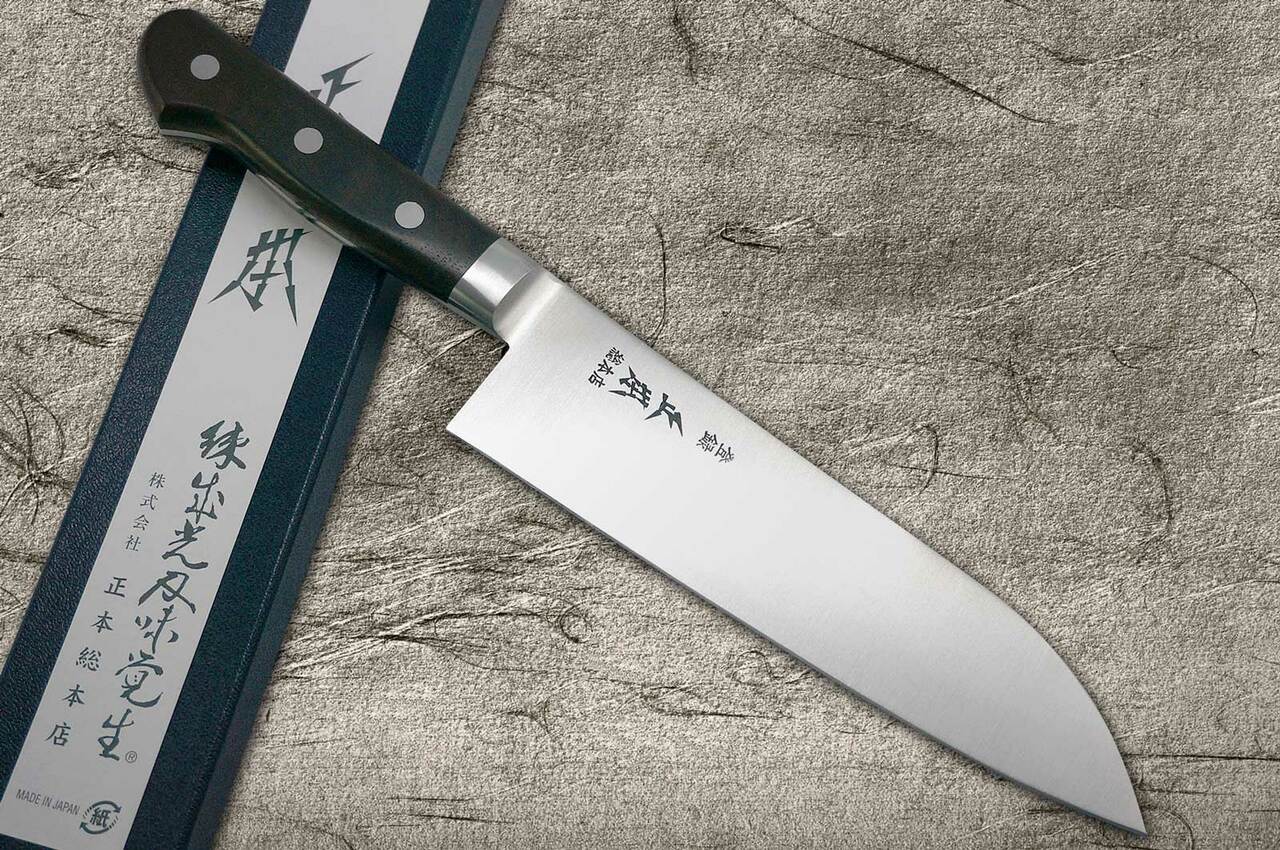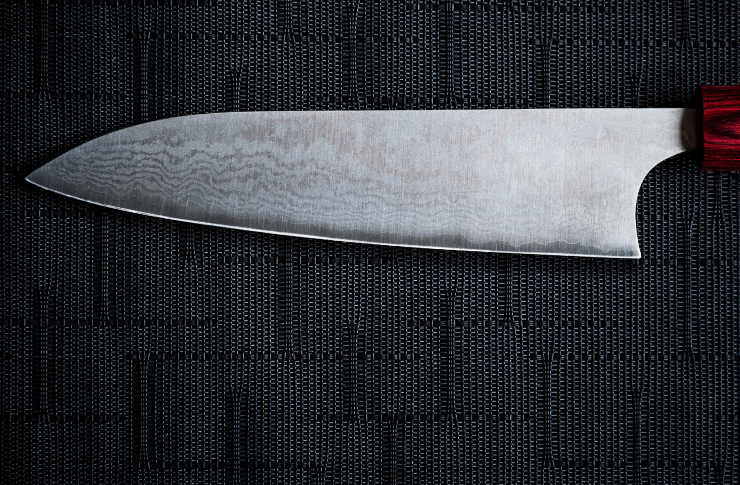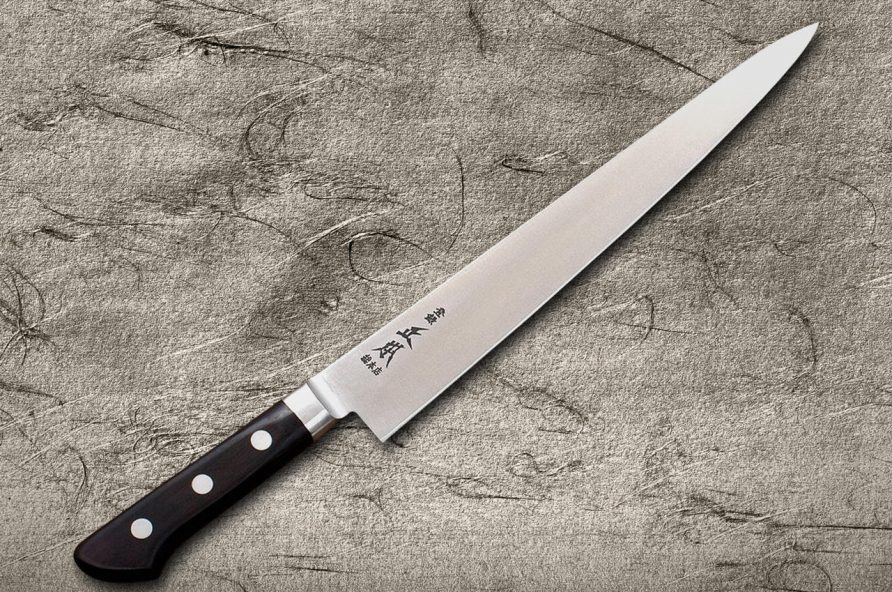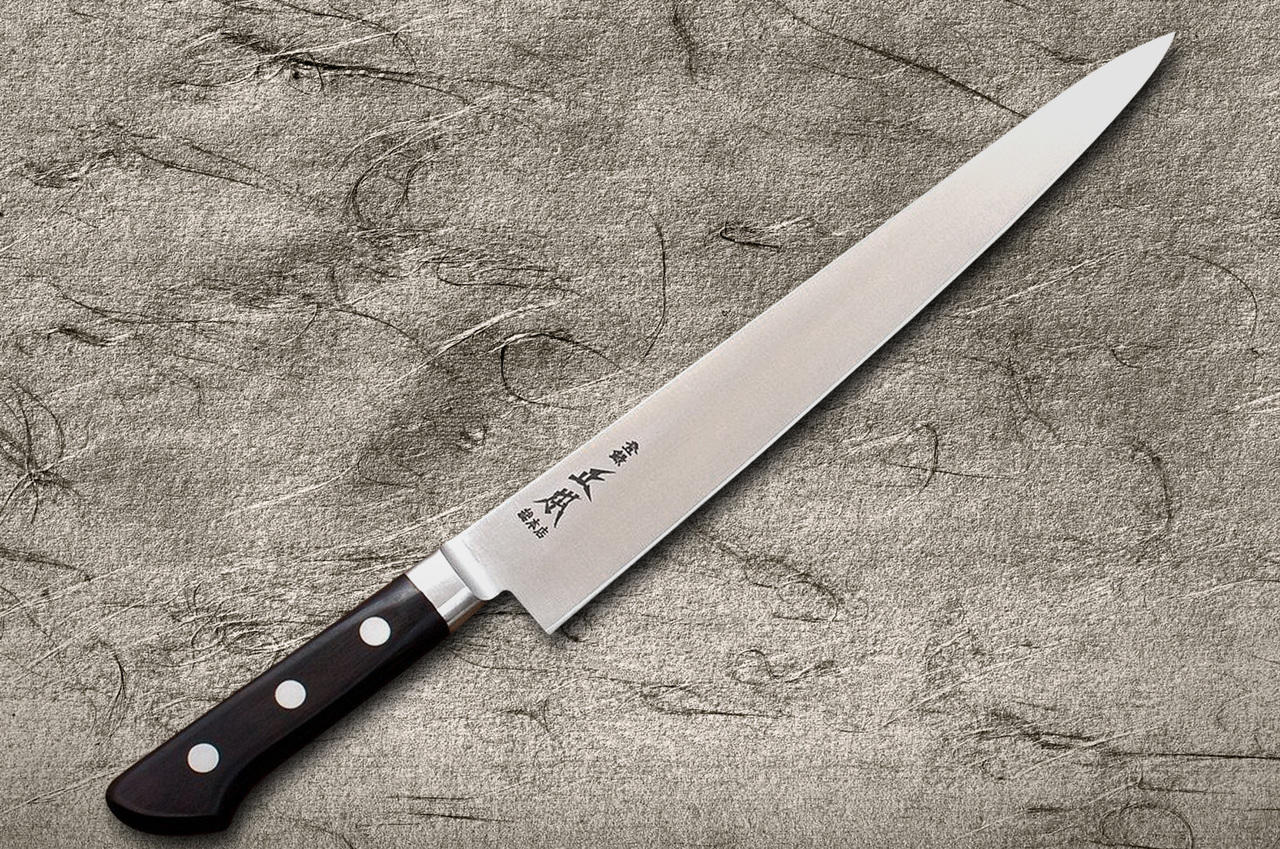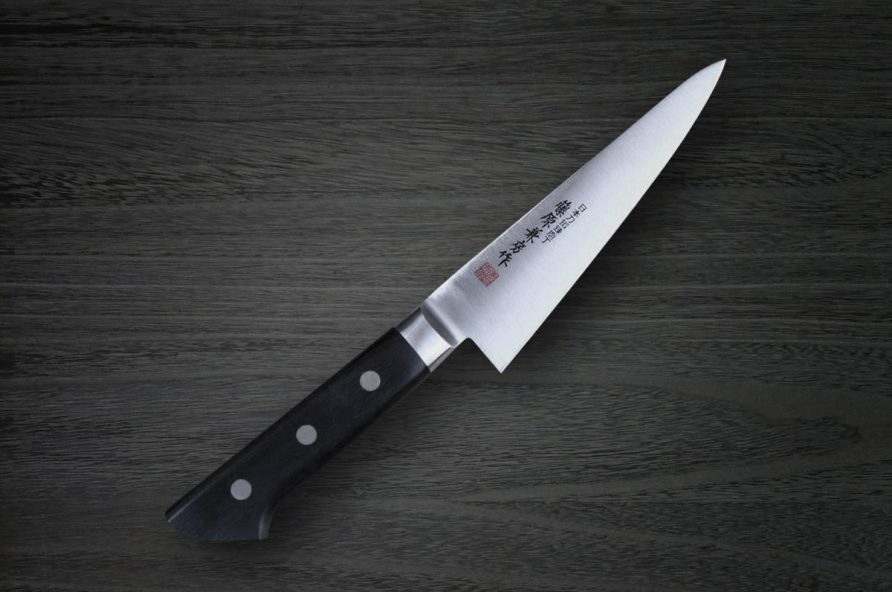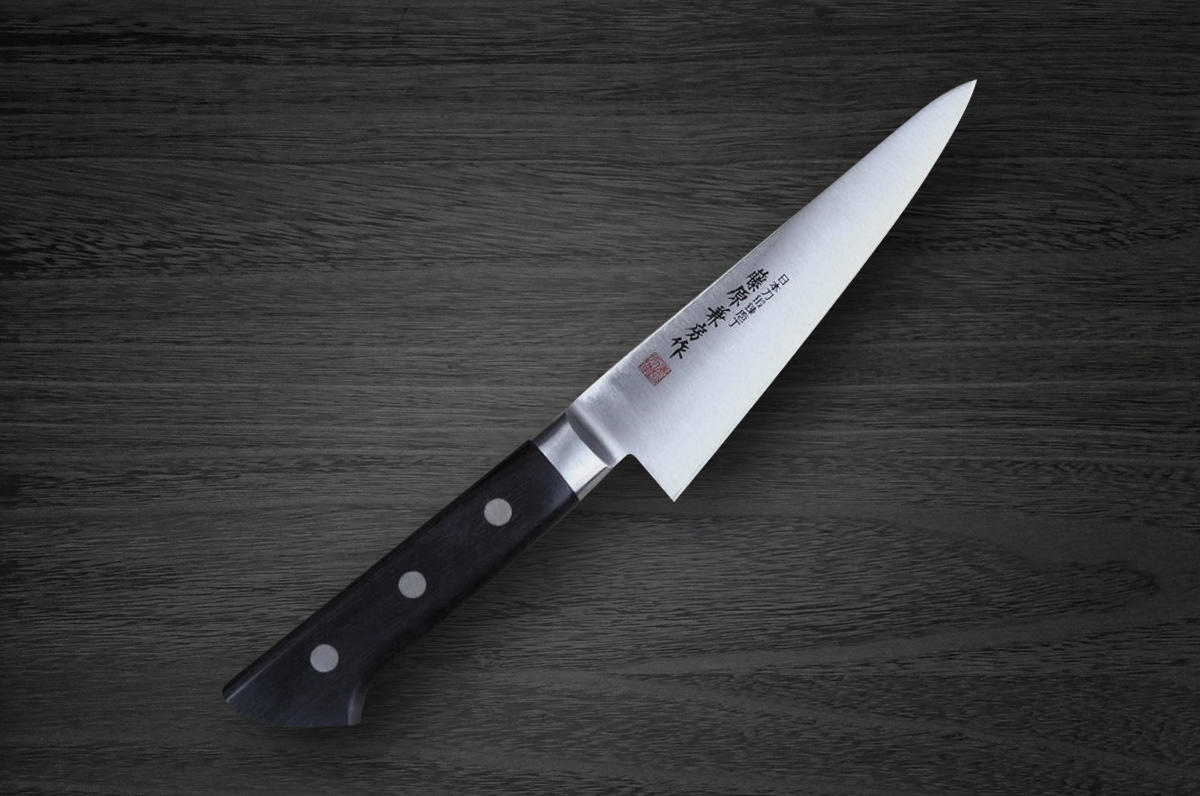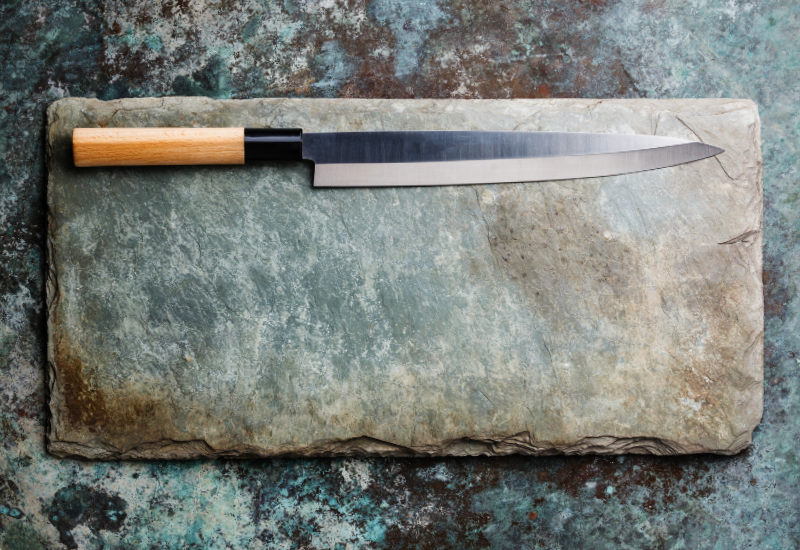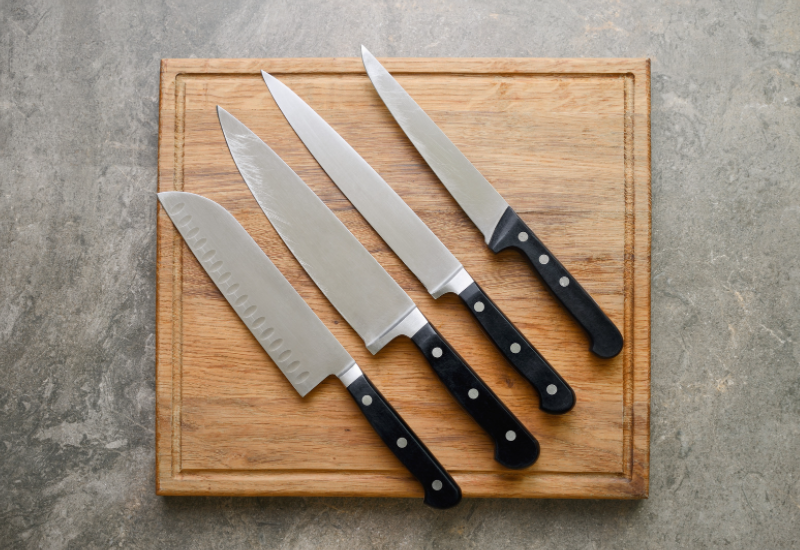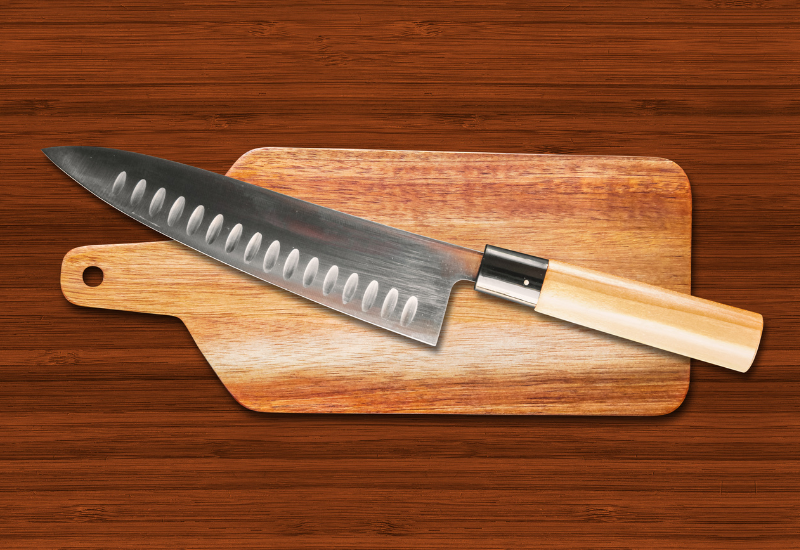
img by : https://www.hocho-knife.com/masamoto-vg-cobalt-steel-japanese-chefs-fuguhiki-sashimi-270mm-vg0527/
Masamoto is one of the most esteemed names in Japanese cutlery, known for blending traditional craftsmanship with modern technology. The Masamoto VG Cobalt Steel knife is a testament to this legacy, offering superior performance and durability. This review delves into the features that make this knife a preferred choice among culinary professionals and enthusiasts.
Design and Materials
The Masamoto VG knife is crafted from VG Cobalt Steel, an upgraded version of the popular VG-10 steel. This alloy includes cobalt, which enhances the blade’s hardness and ensures longer edge retention. The blade boasts a sophisticated, polished finish that not only looks impressive but also contributes to its resistance against corrosion and wear. The handle is typically made from high-quality composite material, designed to withstand the rigors of a professional kitchen while providing a comfortable grip.
Performance
The cutting performance of the Masamoto VG Cobalt Steel knife is exceptional. The enhanced hardness of the cobalt alloy allows for a sharper, more resilient edge, making precision cuts effortless. It excels in a variety of tasks, from slicing delicate fish for sashimi to chopping hard vegetables. The blade’s balance and the handle’s ergonomic design minimize hand fatigue, making it suitable for extended use in busy culinary settings.
Durability
One of the standout features of the Masamoto VG knife is its durability. The cobalt-infused steel not only maintains sharpness longer but also withstands the typical wear and tear seen in lesser quality knives. While it is resistant to rust and corrosion, proper care—including hand washing and immediate drying—is recommended to maintain its pristine condition over time.
Price
The Masamoto VG Cobalt Steel knife is positioned at the higher end of the price spectrum, reflecting its premium materials and the brand’s storied heritage. It represents a significant investment, but one that is justified by its superior performance, longevity, and the craftsmanship behind it. For professionals and serious home cooks, this knife is a worthwhile addition that promises years of reliable service.
Conclusion
The Masamoto VG Cobalt Steel knife is a remarkable fusion of traditional Japanese craftsmanship and advanced material science. Its elegant design, exceptional sharpness, and durability make it an indispensable tool in the kitchen. Whether you are a professional chef or a passionate home cook, investing in a Masamoto knife means equipping yourself with one of the best tools available in the culinary world.



